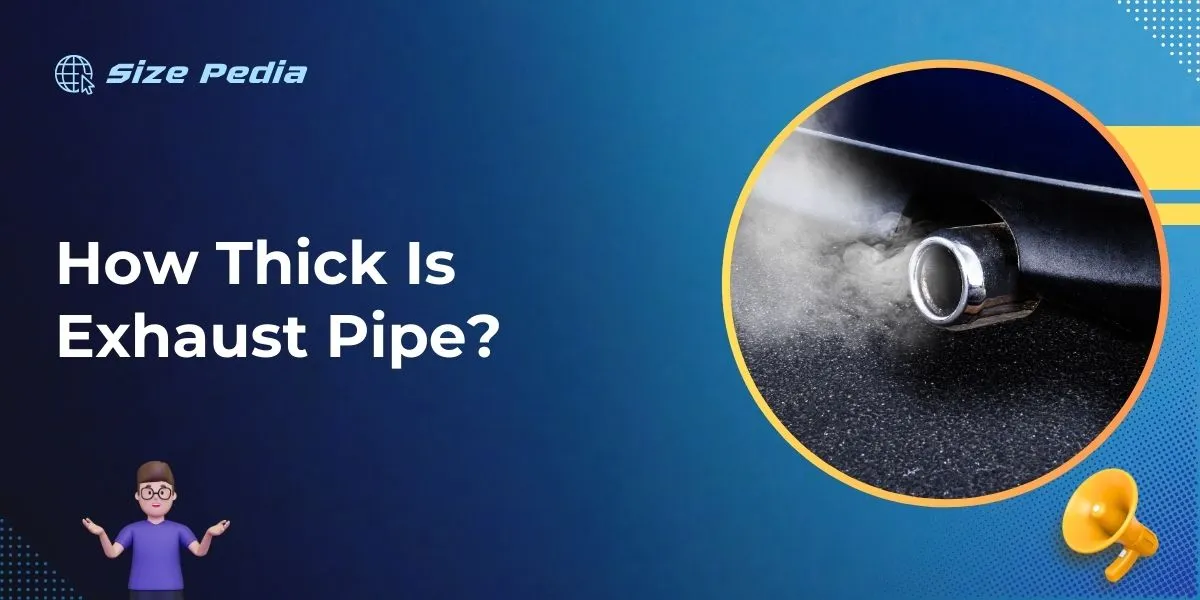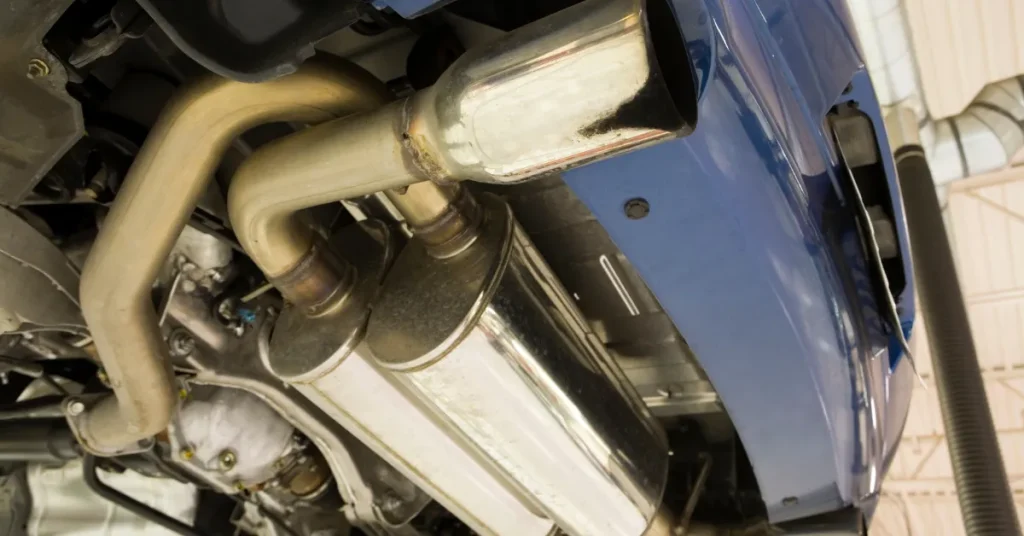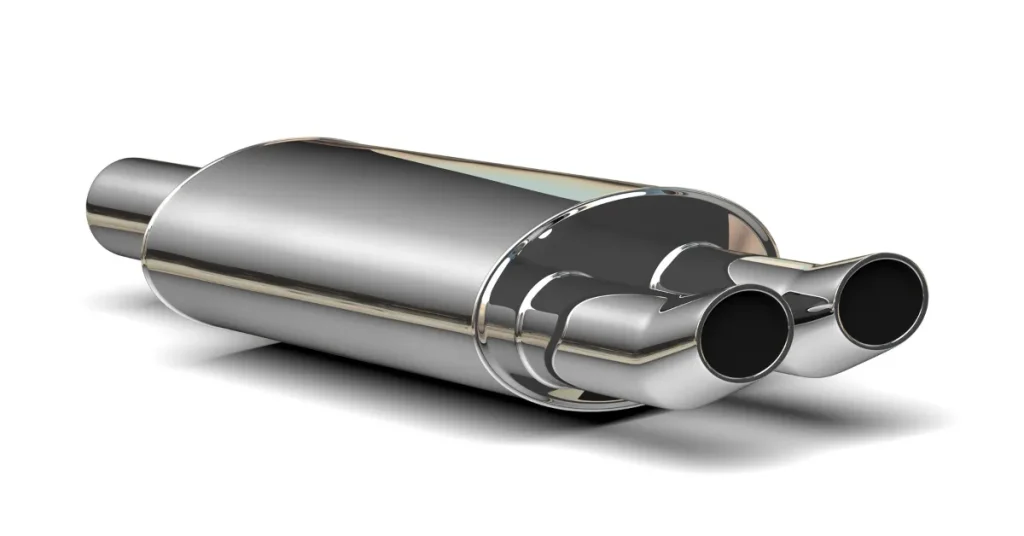Exhaust pipe thickness typically ranges from 1.5mm to 2mm. This measurement varies based on the vehicle and exhaust system design.
Selecting the right exhaust pipe for your vehicle is crucial for optimal performance and longevity. The exhaust system plays a significant role in controlling noise, directing fumes away from passengers, and improving engine efficiency.
Understanding the intricacies of exhaust pipe specifications can aid in maintaining your vehicle’s health and ensuring compliance with environmental standards.
Car enthusiasts and mechanics alike recognize the importance of the proper thickness for durability and function.
With vehicle manufacturers adhering to precise engineering standards, choosing the correct exhaust pipe is a balance between thickness, material quality, and design.
Remember, the thickness of your exhaust pipe can impact the overall performance and sound of your vehicle, so it’s essential to consider this when inspecting or upgrading your exhaust system.

The Role Of Thickness In Exhaust Performance
If you’re diving into the world of car maintenance or customization, understanding exhaust pipe thickness is crucial. The wall thickness of an exhaust pipe plays a significant role in the overall performance and sound of your vehicle.
So, let’s explore how this seemingly mundane characteristic can have a profound impact on your exhaust system.
Impact On Sound And Vibration
A car’s growl or purr comes from its exhaust system. Thicker exhaust pipes can alter sound waves, leading to a deeper tone. This reduction in high-frequency sounds results in a less raspy and more robust exhaust note.
Additionally, thicker walls help minimize vibrations. These vibrations, when uncontrolled, can lead to noise and discomfort.
- Deeper, more pleasing sound with thicker piping
- Reduced vibration means a smoother ride
- Enhanced noise control improves driving experience
Influence On Durability And Lifespan
Durable exhaust pipes stand up to harsh elements. Thicker pipes resist corrosion and wear for longer periods. This means you won’t have to replace them as often.
Exhaust systems with thicker pipes can better withstand the thermal stresses from hot exhaust gases, protecting against premature failure.
| Exhaust Pipe Thickness | Durability | Lifespan |
| Thin | Lower | Shorter |
| Thick | Higher | Longer |
A longer-lasting exhaust system means better vehicle performance and reduced maintenance cost over time.
Gauging The Gauge: Understanding Pipe Measurement

When talking about the thickness of exhaust pipes, it’s all about the gauge. The gauge of a pipe refers to its thickness. A lower gauge means a thicker pipe. Measuring the gauge correctly is crucial for fitting and durability.
Now, let’s delve into the common measurements for exhaust pipes and explore different measurement systems.
Common Thickness Measurements For Pipes
Exhaust pipes come in various gauges. These affect performance and longevity. Here’s a look at familiar thickness levels:
- 14-Gauge: Thick and durable, often used in high-performance vehicles.
- 16-Gauge: Mid-range thickness, a balance of performance and cost.
- 18-Gauge: Thinner and lighter, a common choice for standard use.
Knowing the right gauge helps maintain your car’s proper exhaust flow. It’s essential for optimal engine function.
The Metric Vs Imperial Measurement Systems
Thickness can be in metric (millimeters) or imperial (inches) units. Here’s how they compare:
| Gauge | Thickness (inches) | Thickness (millimeters) |
| 14-Gauge | 0.0747″ | 1.897 |
| 16-Gauge | 0.0598″ | 1.519 |
| 18-Gauge | 0.0478″ | 1.214 |
The choice between metric and imperial often depends on the region. In the United States, imperial is common. Elsewhere, metric may be standard.
Material Matters: Types Of Exhaust Pipe Metals
Exhaust pipes matter a lot for cars. They are not all the same. Let’s look at different metals for exhaust pipes. Each type has its own perks and price. Pick the right one for your car.
Stainless Steel Versatility
Stainless steel is a top choice. It fights rust and lasts long. It shines under extreme conditions. Tuners and performance cars love it. Here’s why:
- Resists corrosion: Thanks to chromium, it stays like new.
- Durable: It’s tough and withstands high pressures.
- Looks good: It keeps its shine for years.
Aluminized Steel And Cost Efficiency
Aluminized steel is budget-friendly. It’s covered with aluminum and silicon. This makes it good at handling heat. It’s good for those who want value. Look at its benefits:
| Feature | Benefit |
| Aluminum coating | Protects against rust |
| Cost-effective | More for less |
| Heat resistance | Good for standard use |
Application Specific Pipe Selection
Choosing the right exhaust pipe thickness is essential for any vehicle. Different vehicles need different exhaust pipes for the best performance.
Some need thicker pipes, while others do not. Let’s dive into what suits performance vehicles and standard consumer vehicles.
Needs Of Performance Vehicles
For those pushing their cars to the limit, exhaust pipe thickness matters. A thicker pipe can handle more pressure and heat. This results in a stronger performance. Consider the following:
- Thermal Endurance: Racing generates more heat, so pipes must withstand this.
- Pressure Resistance: High-speed driving increases exhaust pressure, requiring durable pipes.
- Material Quality: Sports vehicles often feature stainless or aluminized steel for durability.
- Diameter: A wider pipe allows more gas flow, boosting performance.
Considerations For Standard Consumer Vehicles
In contrast, regular cars need reliable exhaust pipes more than exceptionally thick ones. Prioritize these aspects:
- Cost Efficiency: More affordable materials like mild steel are common and effective.
- Corrosion Resistance: Ensure the material balances durability and longevity within typical driving conditions.
- Noise Reduction: Thicker pipes can reduce noise, but the standard thickness usually suffices for everyday use.
- Compatibility: The pipe should fit the vehicle’s design and not alter its intended performance.
Diy Tips For Measuring Exhaust Pipe Gauge

Understanding the thickness of an exhaust pipe is crucial for maintenance or modification tasks. This section provides a DIY approach to measure the gauge of an exhaust pipe.
Tools You Will Need
- Caliper: To measure the pipe’s thickness accurately.
- Steel Ruler: Helps measure pipe diameter.
- Gauge Chart: To compare measurements.
- Marker: To note down the measurements.
Step-by-step Measurement Guide
- Locate the exhaust pipe: Ensure visibility and access.
- Clean the pipe: Remove any grime for precise measurement.
- Use the caliper: Measure the wall thickness at several points.
- Measure the diameter: Record the outside diameter with the ruler.
- Note the measurements: Use the marker on the pipe or a notepad.
- Refer to a gauge chart: Determine the pipe gauge with your measurements.
Common Mistakes To Avoid
- Ignoring rust: Rust can falsify measurements.
- Avoiding multiple measurements: Take various to ensure accuracy.
- Measuring at bends: Can lead to incorrect readings.
- Forgetting the calibration of tools: Always check for tool accuracy before use.
Advancements And Trends In Exhaust Pipe Technology
The world of automotive exhaust systems has changed dramatically. With technological advances, exhaust pipes are no longer just tubes for fumes. They play critical roles in vehicle performance and environmental impact.
Innovations In Material Science
New materials are revolutionizing exhaust pipe design. Traditional steel pipes are giving way to advanced alloys and composite materials.
- Stainless steel: Resists corrosion, lasts longer.
- Titanium: Lighter weight, promotes efficiency.
- Carbon fiber: Reduces weight, improves performance.
These materials enhance durability and performance but vary in thickness. They tailor to vehicle needs.
The Shift Towards Eco-friendly Solutions
The auto industry is focusing on environmentally friendly exhaust technologies. This shift leads to innovative pipe designs for reduced emissions.
- Integration of catalytic converters in pipes.
- Improved aerodynamics for better flow.
- Pipes with sensors for monitoring exhaust quality.
This trend lowers harmful emissions and fits green regulations. It paves the way for cleaner vehicles ahead.
FAQs About How Thick Is Exhaust Pipe
What Gauge Of Steel Is Exhaust Pipe?
Exhaust pipes typically use 16-gauge steel, although thickness can vary by manufacturer and application. Thinner gauges like 18 may be common for aftermarket performance systems.
What Is The Standard Wall Thickness Of Exhaust Pipe?
The standard wall thickness for exhaust pipes typically ranges from 1. 5mm to 2mm.
How Thick Is 3 Inch Exhaust Pipe?
A 3 inch exhaust pipe typically measures 3 inches in diameter. The wall thickness can vary, but a common standard is around 0. 065 inches for steel pipes.
How Thick Is 16 Gauge Exhaust Pipe?
A 16 gauge exhaust pipe typically has a thickness of 0. 065 inches, or 1. 65 millimeters. This standard measurement ensures durability and performance in automotive exhaust systems.
Conclusion
Understanding the thickness of your exhaust pipe is crucial for optimal vehicle performance and longevity. This guide aimed to clarify the variables influencing exhaust pipe thickness.
We’ve explored materials, design considerations, and signs of wear and tear. Remember, the right thickness ensures efficiency and durability, so choose wisely for a smooth ride.
Keep these insights in mind for your next maintenance check or upgrade.
Resources:
1.https://epa.ohio.gov/static/Portals/27/echeck/docs/exhaust_repair_guidelines.pdf
